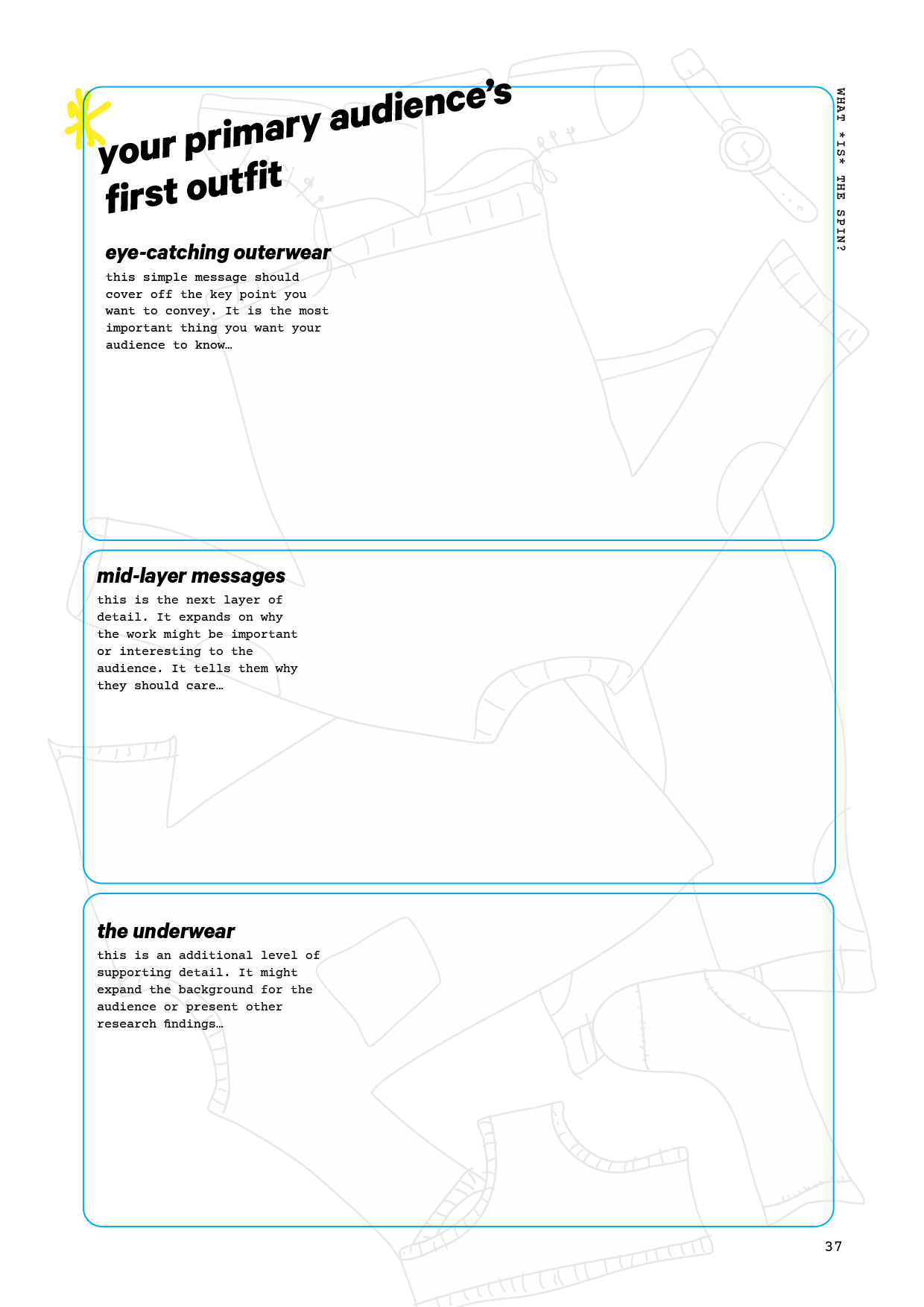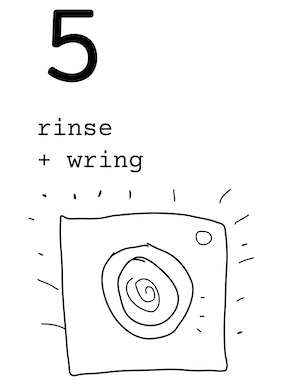Stage 5: rinse + wring
This stage has two parts: what’s in the spin? audiences and messages, and what *is* the spin? messages rinse out.
It is about mapping who are audiences are, what we want them to know, and how we could connect with them. In essence, making sure we are centering the engagement on them and their needs.
What is ‘what's in the spin?’ audiences and messages?
This step uses a scenario where audiences (primary, secondary, ‘secret’) are ‘overheard’ in a laundromat explaining why they took part in the proposed engagement, what they thought about the experience and what they learnt.
The zine explains the scenario like this:
imagine you have run your first engagement event or activity, and it was a great success! The next day, the laundromat attendants are ‘overhearing’ while some people who attended your engagement activity rinse their socks and talk to their friend about going to your activity. In an ideal world, what would the earwigging attendants hear?
The overheard are produced for:
A ‘primary’ target audience
This is the main group you want to reach with your engagement. When people ask ‘who is it for?’ this is the first group you name.
A secondary audience
This might be another key group you want to reach, or someone that unlocks the primary audience.
A ‘secret audience’
This might be someone you know you want to be impressed — perhaps they have power or influence in some way? A politician, funder, manager, colleague, idol…? Perhaps this is a ‘stealth’ audience — an undeclared someone you need to engage with in order to reach someone else. It might even be an audience you expect to be antagonistic or challenging, and you want to deal with alongside the declared audiences.
Why?
The purpose of this exercise is to centre the proposed scicomm/engagement on the audiences rather than defaulting to modes that the individual scientist-communicators are most comfortable with.
It is a chance to ask, who are the people you’re doing this for or with? And also to have another terminology conversation: are these audiences, or ‘publics’, or ‘users’, or ‘participants’ or people (or a named group of people) in the contexts of the projects in the laundromat?
In addition, the ‘secret audience’ helps reflexively address groups or individuals that might hold power that needs to be handled in a certain way. These audiences are rarely overtly discussed, so it is a moment to articulate (in a safe space) how these people are being catered to, or handled.

Completed who’s in the spin on the washing machine top
What is ‘what *is* the spin messages rinse-out?
Having looked at the people who will be the target of the scicomm and what their ideal experience should be in ‛what’s in the spin?’, this stage is an extra rinse to touch a little more on the key messages.
The zine workbook frames these as ‘outfits’. What style would suit the values and interests of the audiences? How can an impression be made quickly? How can it be made memorable?
The AAAS Center for Public Engagement with Science and Technology suggests identifying the most important thing for your audience to know first. From there, you can add more: what goes on at each layer of your messaging? How do you bring in increasing levels of detail without relying on technical jargon? What stories, analogies or examples can help?
Why?
To centralise the messaging on the audience. This requires a flipping of the normal academic model of background>detail>conclusions to offer the headline why this matters>the detail in the middle that gives so what? context>followed by supporting detail as necessary.

Page 37 from the zine workbook showing the stages of the ‘what *is* the spin?’

